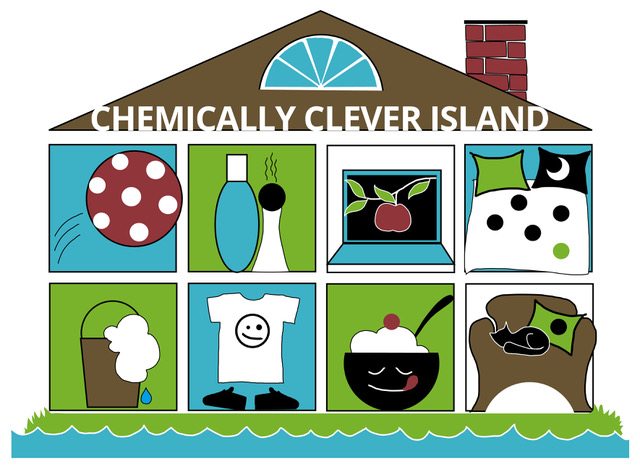Chemical cocktails to everyone

Swedish house cats carry 50 times more brominated flame retardants in their blood than their owners. Even though humans don’t have a fur to store floor dust in or lick, the numbers say something about what is hiding in our homes. We eat chemicals, we breathe them and our skin gets exposed to them. Even if far from all are dangerous, nobody knows what happens when small amounts of many different chemicals get mixed in our bodies all the time. Do they work together? Do they get more potent and toxic together than separately? This chemical cocktail is certainly not what we have in mind when we’re planning a cosy night on the couch.
These might be some of the secret guests in your living room:
Brominated flame retardants
Different kinds of flame retardants are used in furniture, textiles, cables, insulation and electronics etcetera. Sofas and other upholstered furniture from 1970-1990s are the worst, with brominated flame retardants that are almost non-degradable and suspected to be endocrine disruptive or carcinogenic.
Formaldehyde
Modern shelfs are often made of some kind of chipboard, where glue and solvents may contain formaldehyde. Formaldehyde can also be found in for instance mats and textiles. Sensitive persons can react with pain in the eyes, nose or throat, or with coughing and skin irritation. Prolonged exposure may cause cancer.
Perfluorated substances
Heat resistant and fat- and water repellent, these substances can be hiding in furnishing fabrics, mats and floor wax. Some of them are chronically toxic, endocrine disruptive, allergenic, toxic to aquatic organisms and carcinogenic. When they are burned as waste they generate greenhouse gases that are thousands of times stronger than carbon dioxide. The chemical structure of some brominated flame retardants is reminiscent of the thyroid hormone thyroxine. This is believed to be the reason for the increase of hyperthyroidism in cats. Other endocrine disruptives interfere with other functions in humans as well as animals. Clean the dust away, especially if you have kids and pets in the house.
